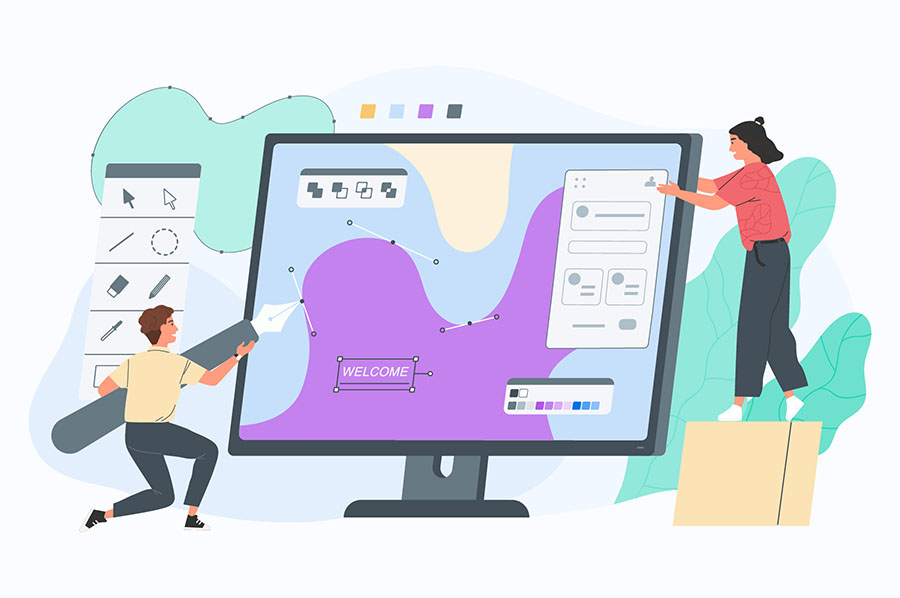Which Graduate Degree Programs Offer the Best Value?

The U.S. Bureau of Labor Statistics expects the demand for web developers to grow over the next 8 years... and no one is surprised to hear it.
Web design and development is a place filled by a variety of creative and often entrepreneurial people. To be successful, a designer needs to be creative and artistic, but he also has to be edgy and business-savvy. He has to make attractive sites, but he has to approach the SEO and marketing of the site with anything but an artist's eye. He has to know his tech, and he has to know his business.
Components of Successful Web Design Education

A Web Designer has to know more than just HTML. He has to know:
- Markup Languages: HTML, XHTML, XML, (sometimes even SGML)
- A Server-Side Scripting Language (Ruby, PHP, ASP)
- Client-Side Scripting Language (Javascript)
- Flash
- CSS (Cascading Style Sheets)
- E-Commerce
- SEO (Search Engine Optimization) and SEM (Search Engine Marketing)
Many colleges and other higher educational institutions provide coursework in each and all of these areas. Web designers and developers who take the time (and spend the money) to become degreed or certified web professionals benefit from better-paying jobs afterward.
Designers Need HTML, XHTML and CSS for Web Design
HTML is still the core of web design, and most web designers agree that it's still beneficial to understand how it works. Even though WYSIWYG (What You See Is What You Get) design programs make it almost unnecessary, a problem with a page inevitably requires parsing HTML code. HTML requires the use of tags, as do most of the other web languages, and all of the markup languages. Designers who eventually drift away from nuts-and-bolts development still benefit from the understanding of the language, and even SEO experts benefit.
CSS is the coding language that made HTML start to look appealing. CSS gives the designer more layout options, offers more choices in text color and font, and makes the control of a site's many pages much simpler. Without a knowledge of CSS, a designer has to depend entirely on the capability of whatever design program is at his disposal. This can work, but an understanding of CSS gives him more freedom to change the code to a customer's tastes, and it makes him more in-demand by larger design companies.
Scripting Languages
Scripting languages fall into two categories, server-side and client-side. Server-side scripting languages are PHP, Ruby, ASP, Perl, and ColdFusion. They require communication with the server, and generally are used to create content that appears on the website. Sometimes, they are dynamically linked to information provided by users' cookies, and adjust the website-content based on that information. This is different than client-side scripting languages.
Client-side scripting languages make applets or applications that begin with a user's mouse click, rollover, or some other interaction. The browser is separate from the server, and client-side scripts act independently from the server, providing quicker interactivity and quicker effects. Client-side languages are javascript, flash, java, HTML, and ActiveX.
Flash has become an increasingly important element in modern web design. Coursework that includes Flash-design and implementation is extremely important for new designers. It makes them more marketable; a good flash portfolio increases a young designer's chances of getting hired.
E-Commerce and E-Marketing
Finally, web designers need a knowledge of e-commerce as they enter the world of web-design. The best clients are the ones who can pay well, the ones who want their websites to help them make money. Training in e-commerce includes learning how to add product sales to a website, how to create a shopping cart, registration, credit card and paypal transactions, everything financial. Everyone uses the web to purchase products, and someone has to make it possible.
In addition to e-commerce, an effective web designer must learn how to optimize his websites for search engines. He has to be able to show potential clients that his sites will appear on the Google or Yahoo! front pages. If a designer can do that, his chances of getting new clients is quite good.
Degrees in web design and development vary. Designers can be certified in any or all of these areas. The standard certification in web design is CIW (Certified Internet Web) professional certification. From there, degrees (associates, bachelors, and masters) are all available. Students can study online or at local colleges. It often doesn't matter where the degree comes from, but since designers need good portfolios and proof of previous work, the knowledge gleaned from the courses IS important.
 Ralph Neht
Ralph Neht